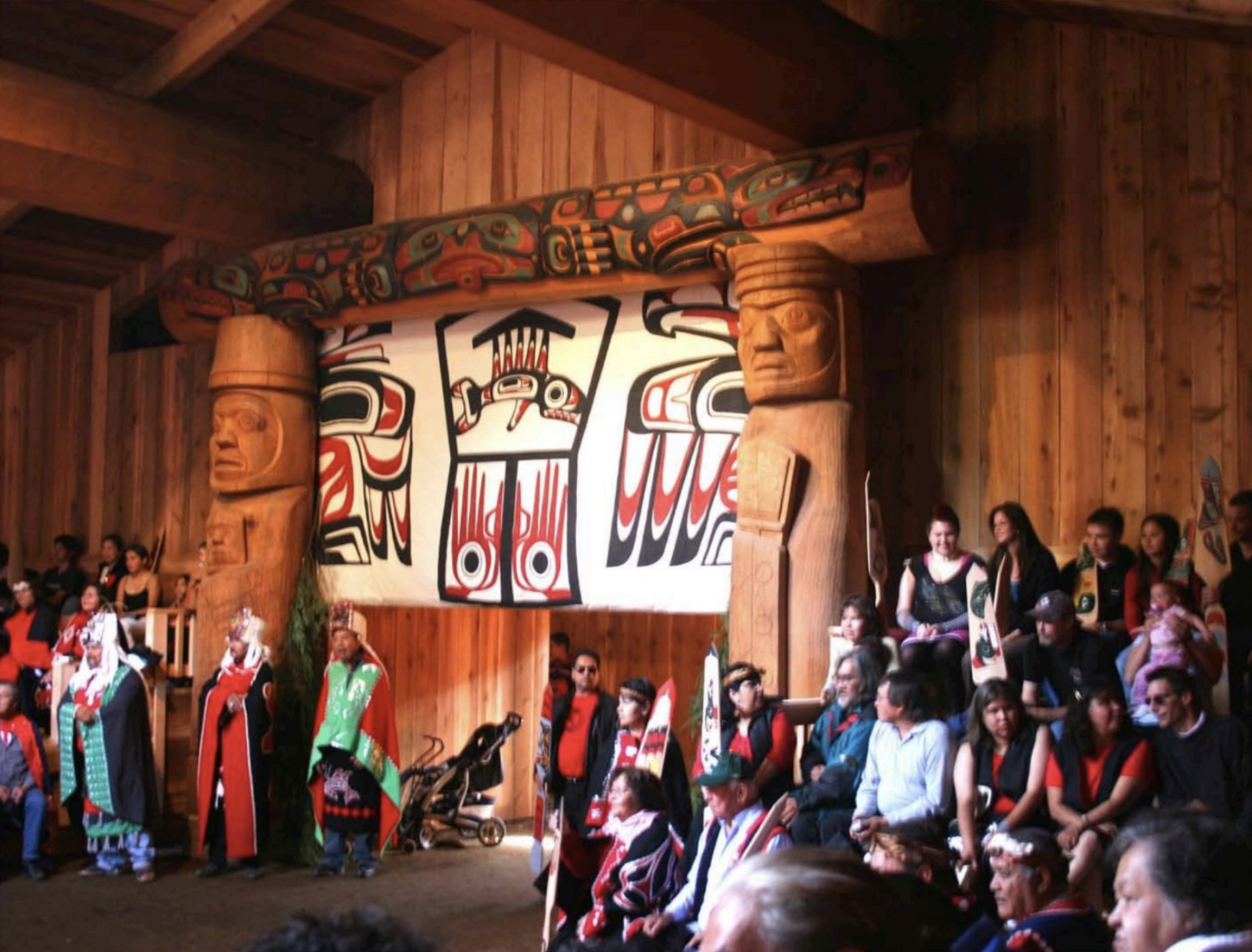
Immerse yourself
W’ui’kinuxv History
For thousands of years, W’ui’kinuxv citizens have been living in the area surrounding Rivers Inlet in a Territory known as the Land of the Hàmac̓a. W'ui'kinuxv cultural history is rich with ceremony, family stories and extensive harvests of diverse species from seafood to plants. Sharing territory, the W'ui'kinuxv and Grizzly Bear enjoy salmon as an important source of nutrition.
Stringing zàxvən (oolichans). The child was identified as Norman Johnson Photo: C. MacKay, 1952, #2005.001.165, Archives, UBC Museum of Anthropology.
Among Kwakwaka'wakw, the sacred Hàmac̓a dance is the most prestigious dance on the Pacific northwest coast. W’ui’kinuxv citizens held high ranks within the ‘Ciqa Dance Ceremony and were sought after for marriage. Originating in W'ui'kinuxv, the Hàmac̓a Dance spread up and down the coast through marriage. As a result, many can recognize the songs and dances as originating from W’ui’kinuxv.
Holding the drum is W’ui’kinuxv Hereditary Chief Jack Johnson. Behind the drum is Alexander Chartrand as a young boy. In ceremonial dances, the children traditionally dance with the women. Due to his respectful request, Alexander was granted a unique opportunity to participate among the men in this sacred dance.
In 2005, W’ui’kinuxv built the House of Nuùw̓aqawa, a big house that provides the space for cultural activities. It represents the resiliency of the W'ui'kinuxv to revitalize their culture despite historical settler impacts in Canadian history. Since 2005, the W'ui'kinuxv have hosted potlatches, feasts, community gatherings, funerals and General Assemblies at the House of Nuùw̓aqawa.
Big House opening. Photo: George Johnson

“We want to get the whole of Rivers Inlet, from Quay to the land—Oweekeno Lake. The white men wants to take all our land and we are in the position of men who have been pushed half way to the water off our land, and it would not take much to push us off the land into the deep water altogether. Sometimes I go round in the timber and see a post; sometimes we get inside the post. And then they come and take our logs. I think that all this is our land and we should not be afraid to take logs anywhere. In the old time the Lord put our fathers here among these mountains and trees. He also put the Salmon there for their food. Sometimes they need to skin the bark off the hemlock trees and eat it for food. Wherever these Government posts are now we cannot work, and that is not good according to our mind. We are very despairing. We have heard that the Government will take land and sell it, but we don’t want to sell our land here, but we would like a yearly rental for it. All these canneries round here should pay us a rental for the use of the land. The canneries come here and we cannot understand how they came. If the Government sell this land to the canneries—did the Government sell this land to the canneries—that is what we want, know? All this land is ours and we want to reserve it for our children.”
Excerpt from W’ui’kinuxv Chief Joseph Chamberlain’s speech to the Royal Commission on Indian Affairs (Rivers Inlet, August 1913)
We thank Katie Ferrante for permission to use photos from the sourcebook We Are the Wuikinuxv Nation, a 2011 collaboration between Pam Brown (MOA Curator, Pacific Northwest) and W’ui’kinuxv Nation. We welcome you to read this rich cultural collection with invaluable insight from W’ui’kinuxv citizens in the link available below.



